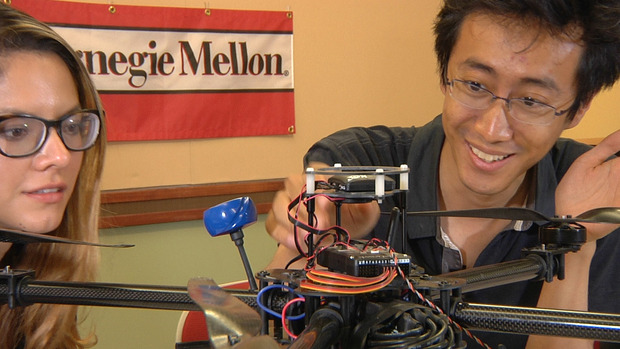
Researchers at Carnegie Mellon University are working on a new generation of disaster drones that can be deployed in swarms into buildings to give first responders a look inside, mapping out the interior as they go.
The drones could be valuable in situations such as those faced recently after massive explosions ripped through a port in Tianjin, China, or in the aftermath of something smaller like a house fire.
“These places are very dangerous for rescuers to go, so we don’t want to just blindly send people inside,” said Pei Zhang, an associate research professor at CMU’s campus inside the NASA Ames Research Park in Moffett Field, California, where the research is taking place.
“Instead, we want to get these things in before people go in and determine if there are people that need help,” he said, gesturing to several drones on the table in front of him.
Zhang envisages using a larger drone, which he likens to a mothership, to carry multiple smaller drones into whatever environment is being explored. The smaller drones would deploy from the large drone and begin their work.
The larger drone, he reasons, has a longer range and can better handle wind and other effects of the environment. But it may be too large to send inside somewhere like a building that’s been compromised by an earthquake.
So the smaller drones, some of which can easily fit in the palm of a hand, would fly inside to do their work.